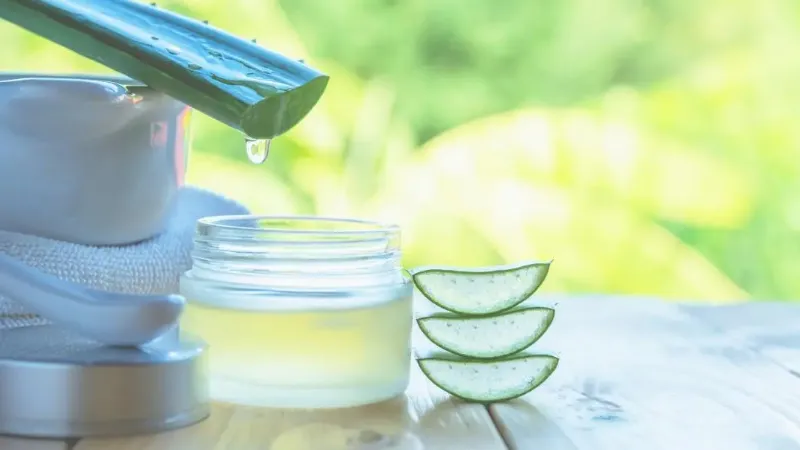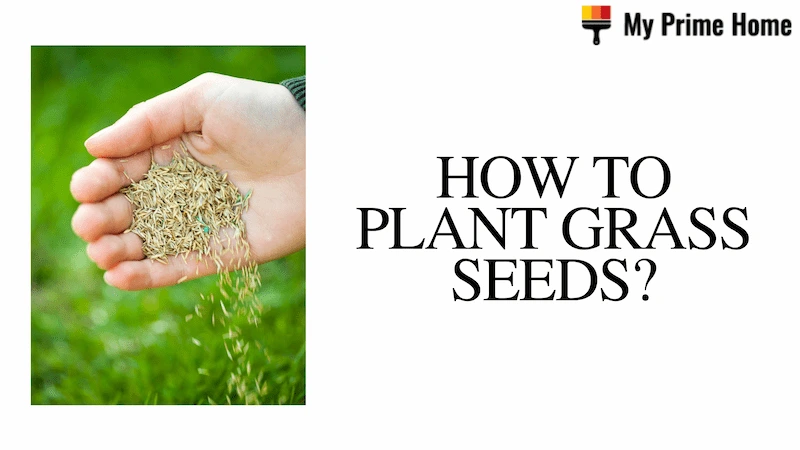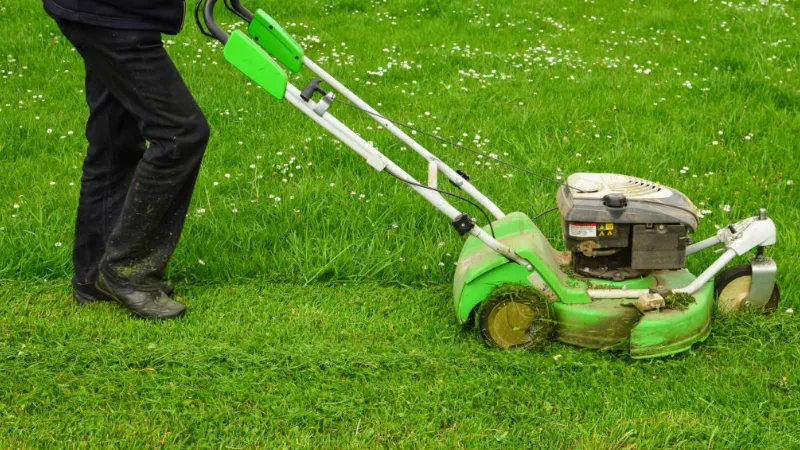Read on to learn how to use aloe vera and what the science says about its advantages.
Numerous skin issues and symptoms, such as canker sores and acne, may be effectively and safely treated or relieved with aloe vera.
In order to avoid any negative side effects, people should exercise caution when taking aloe vera orally to treat IBS or constipation. Diarrhea and drug interactions are two potential side effects of ingesting aloe vera.
Before ingesting aloe vera or using it to treat skin conditions that might call for additional medications, a person should consult their doctor.
Please keep reading for more details.
What is Aloe Vera?
Since ancient times, people have used the healing properties of aloe vera to treat a variety of illnesses. Vera can be consumed directly from the plant or purchased in gel form, and it is typically safe to do so.
The clear gel that is found in aloe vera leaves is what is used in aloe vera creams, gels, and ointments. To treat a variety of skin conditions, these products can be used topically. Aloe is marketed for internal consumption as a liquid or a capsule to support health and wellbeing.
Learn how to use aloe vera and about its possible advantages and risks by reading on.
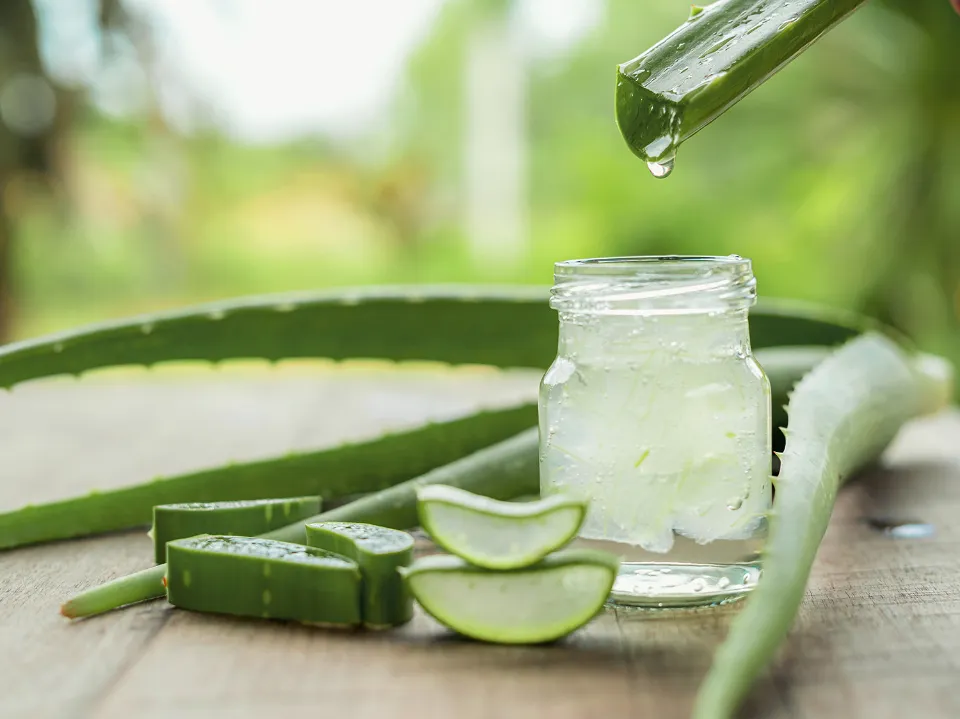
How to Use?
Share on PinterestWhen people use aloe vera topically on the skin or as a mouthwash, experts generally consider it to be safeAloe vera is an ingredient in many products, but it can also be consumed fresh from the plant, according to a reliable source.
Aloe vera leaves can be cut and the gel inside used. Additionally, many pharmacies and health stores sell aloe vera gel that has already been prepared.
When using aloe vera for the first time, one should start out with a small dose and gradually increase it to the appropriate level.
Heals Burns
Aloe vera is frequently utilized in the treatment of burns due to its calming, moisturizing, and cooling qualities.
According to a 2013 study involving 50 participants, those who used aloe vera gel to treat superficial and partial thickness burns fared better than those who applied a cream containing 1% silver sulfadiazine.
A faster rate of wound healing and pain relief was seen in the aloe vera group. Aloe vera also had the advantage of being reasonably priced.
Aloe gel may aid in the healing of burn wounds, but more research is required to confirm this.
Apply aloe vera to the affected area several times per day if you have a sunburn or any other minor burn. Before using aloe on a serious burn, get medical attention. When propagating aloe vera plants, How much sun do aloe vera plants need?
Hair
Aloe vera is used by some people to hydrate their hair and scalp. The hair and scalp can be massaged with raw aloe vera gel or treated with aloe vera-infused hair products.
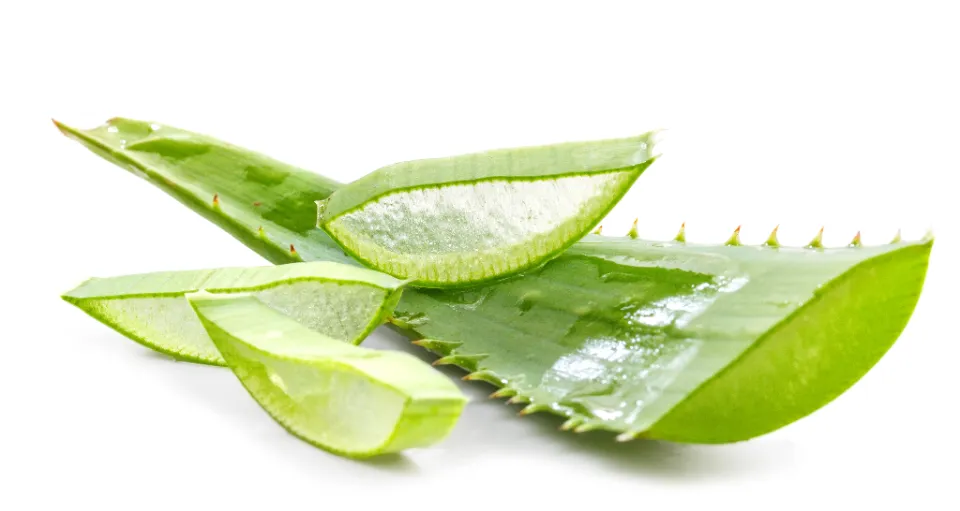
Oral Health
Aloe vera is a component of a few brands of toothpaste and mouthwash. However, it’s best to avoid ingesting raw aloe vera.
Safety
According to the NIHAccording to a reliable source, applying raw aloe vera topically is the safest method. Ingesting aloe vera for digestive issues may cause:
- cramps
- diarrhea
- less effective absorption of medications
Before taking aloe vera orally, diabetics should consult their doctor because it may cause an unsafe drop in blood sugar levels.
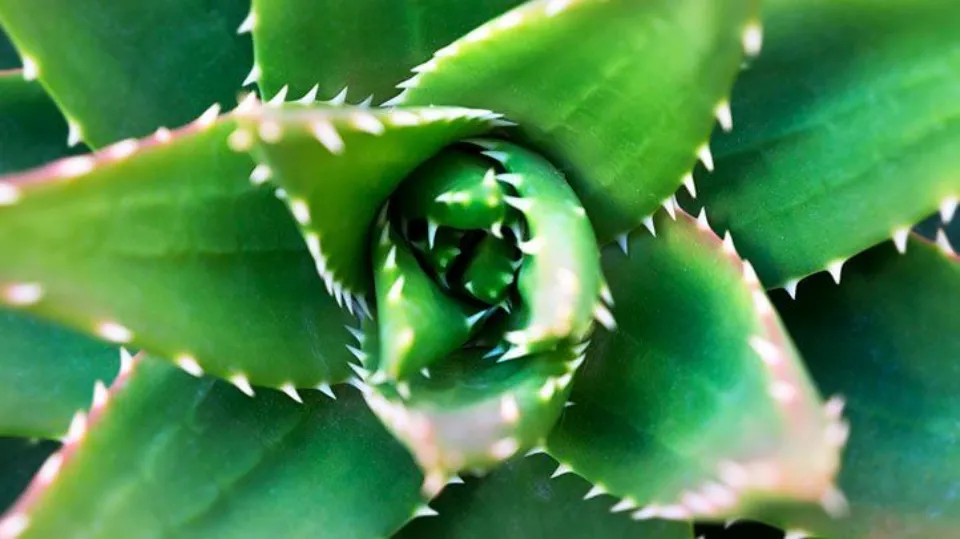
Improves Digestive Health
There is limited evidence to suggest that aloe vera may help with conditions such as constipation and irritable bowel syndrome (IBS).
Research has shown that aloe vera may be effective in treating The study discovered that aloe vera reduced IBS symptoms when compared to a placebo, but more studies are required to confirm the findings.
Other researchers have suggested that aloe vera may help prevent stomach ulcers. The study showed that aloe vera helped stop the growth of Helicobacter pylori bacteria, which are responsible for stomach ulcers.
However, when ingesting aloe vera, one should proceed with caution. It is important to limit the intake due to its potential negative effects, including:
- cytotoxicity (cell toxicity) (Are Aloe Plants Toxic to Cats?)
- mutagenicity (potential of a chemical to cause a cell mutation)
- carcinogenicity
To better understand the effects of consuming aloe vera orally, scientists must conduct additional research.
Treat Acne
In a smaller 2013 study, researchers found that applying a combination of aloe vera and tretinoin to the skin helped treat acne. In an 8-week period, the study found that aloe vera reduced acne lesions and effectively treated mild inflammation.
Food
Aloe vera gel is a component of some juices and smoothies. Make sure you use enough sugar to counteract the plant’s extremely bitter flavor. Aloe vera juice that has already been sweetened and is pure is widely available and can be very cooling on a hot day.
Aloe vera consumption is probably not a good idea if you have an allergy to onions or garlic. Prior to eating it, consult a physician.
Ornament
Plants that resist heat, drought, and other extreme conditions are aloe veras! Because of their tall flowering structures, they make wonderful ornaments for homes and gardens. They also come in a range of colors and shapes. Although not all of them belong to the Aloe vera species, most are excellent pot plants.
Aloe vera thrives in the right environments and consistently produces new leaves that can eventually be harvested. A potted aloe vera plant can supply you with gel-filled leaves for several years with proper care and harvest control.
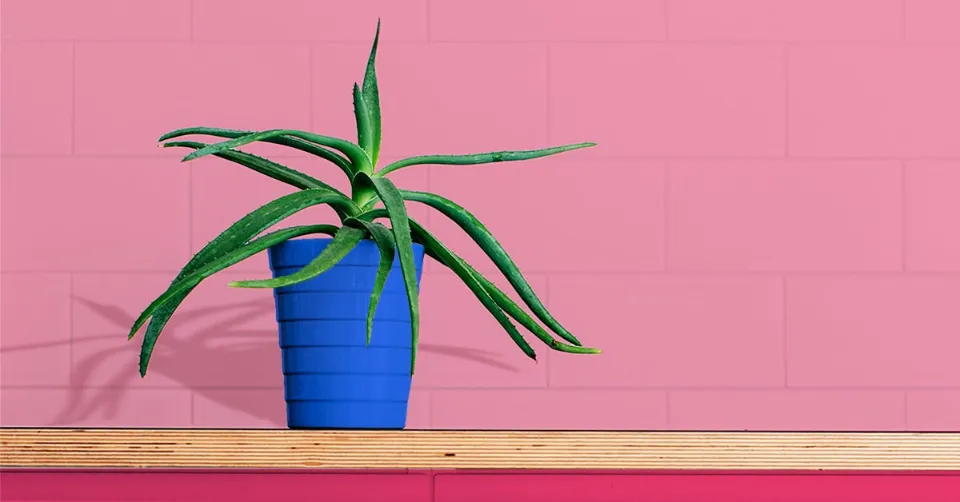
Is Aloe Vera Safe?
Using aloe vera topically for minor skin care issues is safe for the majority of people. Though skin irritations and allergic reactions are possible, it is generally well tolerated. A severe cut or burn should never be treated with aloe vera.
Observe how aloe affects your body’s response. Keep track of any sensitivities or unfavorable reactions you have. If you have an allergy to tulips, onions, or garlic, avoid using aloe. Two weeks prior to any scheduled surgery, avoid taking aloe vera.
Aloe vera shouldn’t be taken orally by women who are pregnant or nursing, or by kids under the age of 12.
When ingesting aloe vera gel or latex, carefully adhere to the dosage instructions. Keep your usage to brief intervals. Take a break for at least one week after a few weeks of use. To ensure quality and safety, only purchase from trusted brands.
Aloe vera latex’s laxative effect has the potential to bring on cramps in the stomach and diarrhea. Oral medications’ effectiveness may be hampered by these effects, which may prevent absorption.
Do not take aloe vera internally if you have the following conditions:
- hemorrhoids
- kidney conditions
- renal disorder
- cardiac condition
- Crohn’s disease
- ulcerative colitis
- intestinal obstruction
- diabetes
Possible side effects of aloe vera include:
- kidney issues
- blood in the urine
- low potassium
- muscle weakness
- diarrhea
- nausea or stomach pain
- electrolyte imbalances
Talk to your doctor before using aloe vera if you are also taking the following medications, because aloe vera may interact with them:
- water pills(diuretics)
- herbs and supplements
- corticosteroids
- digoxin(Lanoxin)
- warfarin(Coumadin, Jantoven)
- sevoflurane (Ultane)
- stimulant laxatives
- diabetes medications
- anticoagulants
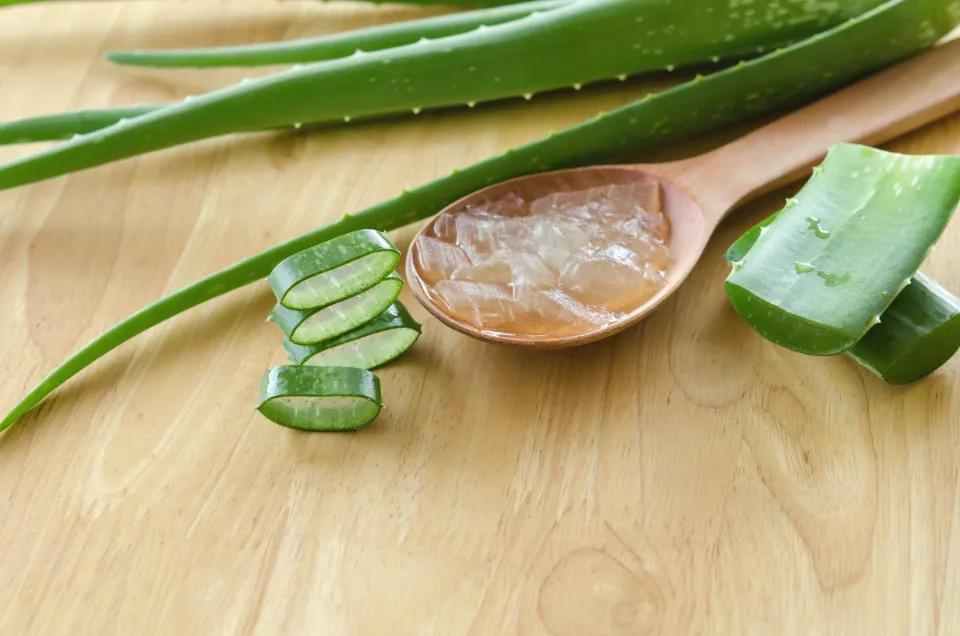
How to Harvest the Plant?
It’s relatively simple to harvest an aloe plant for gel and juice. A mature plant that is a few years old at least is required. This guarantees a higher concentration of the active ingredients.
Additionally, you should wait a few weeks before harvesting leaves from the same plant. If you intend to harvest aloe frequently, you might want to keep a few plants in rotation.
To harvest your aloe plant for gel and juice:
- Pick thick leaves from the outer parts of the plant, removing 3–4 at a time.
- Make sure the leaves are sound and unharmed by mold.
- Cut them just above the stem. The majority of the advantageous nutrients are concentrated at the leaf bases.
- Avoid the roots.
- The leaves should be cleaned and dried.
- Cut off the sharp edges with a knife.
- Separate the leaf’s interior gel from the exterior with a knife or your fingers. What you’ll use from the aloe is the interior gel.
- Observe how the leaf’s yellow sap drains. The aloe vera latex is shown here. You can collect this in a container if you intend to use the latex. You can get rid of the latex if you don’t intend to use it.
- Slice or chop the aloe gel.
After removing the aloe from the outer leaf portion, you can put the aloe in a blender and purée it until the gel is smooth. Then, strain the mixture to get rid of the pulp.
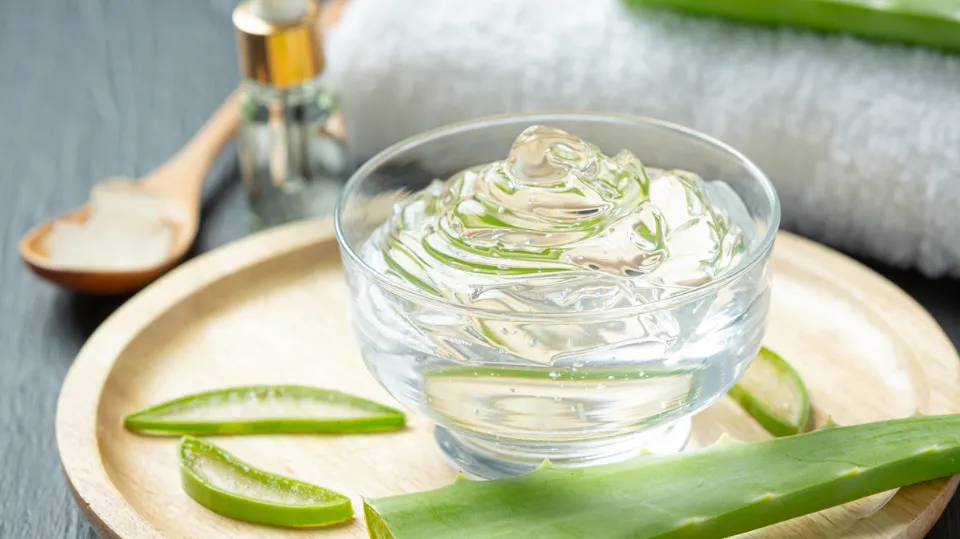
FAQs
What to Do With Aloe After You Cut It?
After cutting the leaf, hold it over a small bowl to let the yellowish latex drip out. You shouldn’t use this component of the plant. At this point, a burn or cut can be soothed by rubbing the cut leaf end on it.
How to Use Aloe Vera on Face?
By purchasing pure aloe vera and applying it generously to your face in place of a cleanser, you’ll be boosting the blood flow in your skin and killing off harmful bacteria. To lessen redness and irritation, spot-treat the areas where your acne breakouts are occurring with aloe, leave it on overnight, and wash it off the next morning.
Can I Use Aloe Vera Straight from the Plant?
Aloe vera is an ingredient in many products, but it can also be consumed straight from the plant. The gel inside an aloe vera leaf can be used by cutting the leaf off. Many pharmacies and health stores also sell aloe vera gel that has already been prepared.
Can We Eat Aloe Vera Directly from Plant?
It’s generally safe to eat the gel inside the aloe vera leaf, as well as the skin. To prevent unpleasant and possibly harmful side effects from latex, wash the skin or gel thoroughly.
Summary: How to Use Aloe Vera?
Aloe vera plants are widely available, relatively simple to grow, and have a wide range of applications.
Aloe is typically safe for most people, but you should consult your doctor before using it if you have a medical condition, take medication, or use herbs because it may interact with those things.
If you have any questions, please leave a comment. My Prime Home tries to give you the best home improvement information. Don’t forget to share the post. Thank you for reading.
You may also interested:
